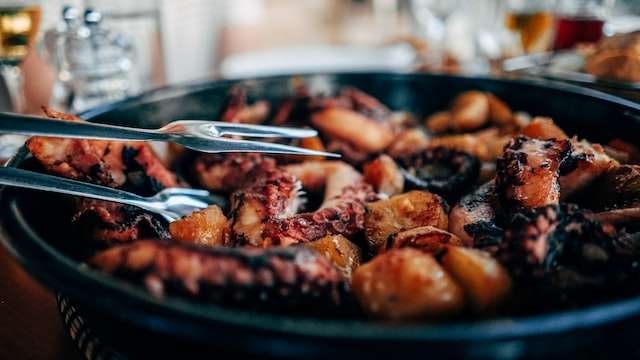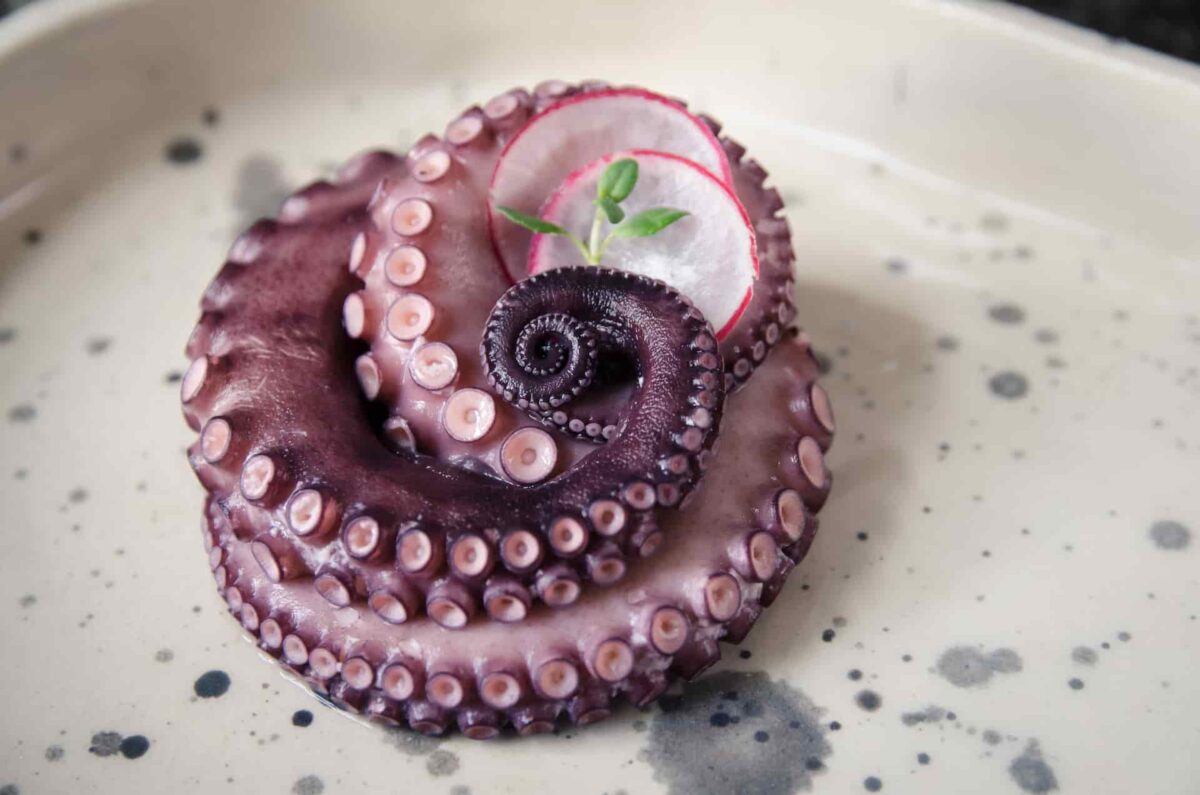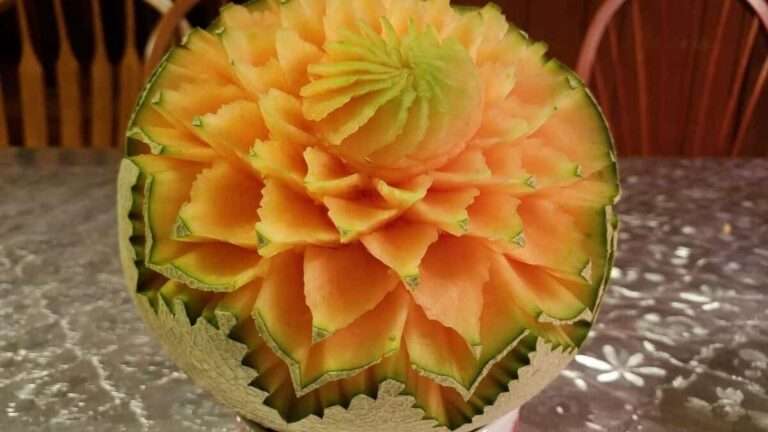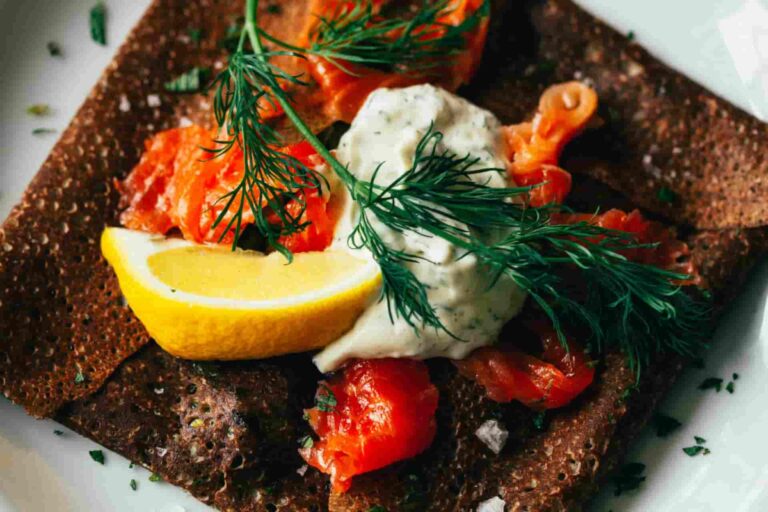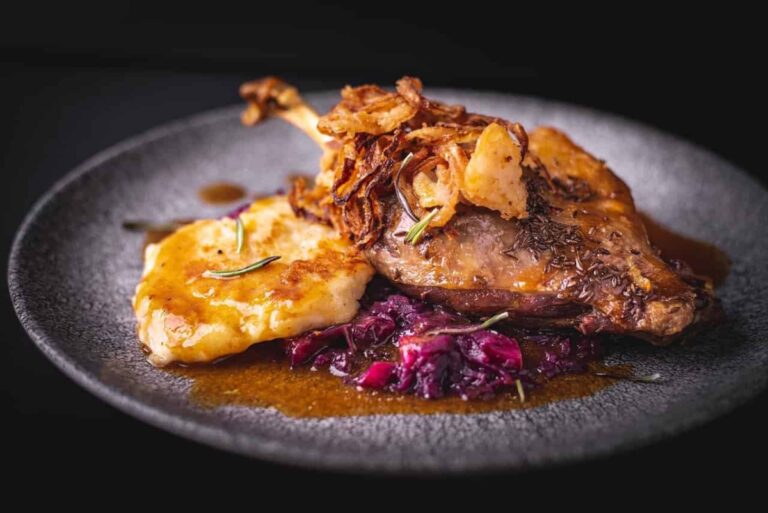Octopus 37 free kitchen insights and benefits
Did you know that octopuses have three distinct types of hearts?
- While two of the hearts are solely responsible for pumping blood outside of the animal’s gills, the third heart is in charge of ensuring that the organs continue to get enough blood supply. The octopus’s organ heart actually stops beating while it swims, which explains why the species prefers to crawl rather than swim, which is more demanding for them. Octopuses are found in all oceanic and freshwater environments.
- Octopuses have blood that has a blue colour. Not because of royal bloodlines, but because of copper. Octopuses, in contrast to a great number of other marine invertebrates, have a high metabolic rate, and as a result, they have a high need for oxygen. Hemoglobin, which is based on iron and is responsible for the red colour of human blood, is less effective at delivering oxygen at low temperatures and in low concentrations of oxygen than its copper-based counterpart, hemocyanin.
- A good number of octopuses are able to flee from danger by shooting a spray of ink that obscures their vision as they speed away on a stream of water. Melanin, the same dark pigment that is found in human hair and skin, is produced inside their ink sacs by these creatures. In addition to this, the ink contains tyrosinase, a chemical that causes the eyes of potential predators to burn and momentarily impairs their ability to smell and taste. The overall effect of octopus ink is similar to that of three other forms of defence, yet it is not toxic.
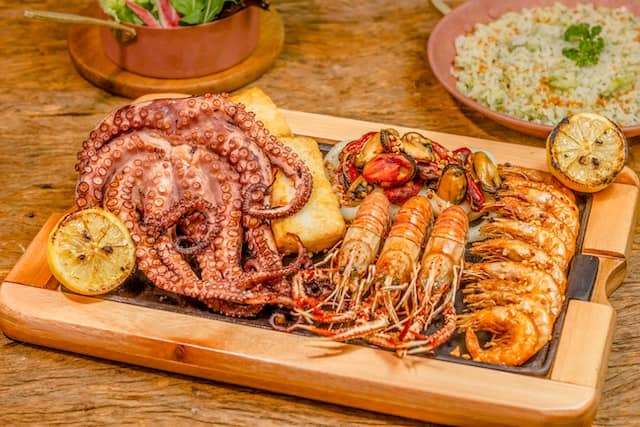
Octopus nutrition values and health benefits
- Aside from being delicious, octopus is a great way to get a variety of minerals, including iron, omega-3 fatty acids, selenium, copper, and vitamin B12. As an added bonus, it is a great way to get your daily dose of potassium, magnesium, and calcium. Taking these minerals together has been demonstrated to reduce the risk of stroke and support heart health.
- Octopus is an excellent source of protein, fat, and a wide variety of essential nutrients. As an added bonus, it is a great source of complete protein for those on a diet since it is low in fat. On the other hand, this might change depending on the method of preparation. The fat and calorie content of a dish might skyrocket if you fry or sauté the octopus in butter or oil.
- Two forms of omega-3 fatty acids found in octopus are helpful in the treatment and prevention of depression and other mood disorders. The omega-3 fatty acids found in octopus have been linked to a variety of health benefits, including the prevention of heart disease. Omega-3 fatty acids have been demonstrated to improve blood pressure and prevent the build up of plaque in the arteries, so easing the burden on the heart. Lowering blood triglycerides, a kind of lipid, may help lower the risk of stroke, heart attack, and heart disease.
- The amino acid taurine, found in octopus, has been proven in studies to have beneficial effects on blood pressure and cholesterol. There is evidence that the taurine in octopus helps fight cancer and viruses. It has been hypothesised that this compound may lower systemic inflammation and can also protect cancer cells from free radical damage because to its antioxidant properties.
- Other antioxidants found in octopus in sufficient amounts include selenium, vitamin B12, and folate, all of which reduce cancer risk. While the full capacity of these antioxidants has yet to be explored, it has been proven that deficiency increases cancer risk.
- Many individuals may not get enough of the mineral magnesium from the food they eat, but you can get it in octopus. Evidence suggests that magnesium helps keep kids’ brains healthy and functioning properly, which is important for their cognitive development. This is being studied as a possible treatment for neurodegenerative disorders including Alzheimer’s and dementia because of its ability to reduce the development of these illnesses.
- Incorporating octopus into your diet as a lean protein source will help you meet your daily protein needs. The high nutritional content, however, may pose problems for those with certain diseases. Consider some of the risks to your health before adding octopus to your diet. Cholesterol levels are up while eating octopus; a 4-ounce serving contains around 30% of the daily recommended value. However, although cholesterol is essential for cell development, excessive amounts may increase the risk of cardiovascular disease.
- Dietary sodium is essential for proper nerve function, but excessive consumption has been linked to high blood pressure, heart disease, and other health problems. Octopus is high in sodium, so if you are watching your salt consumption, you should eat it only seldom.
- Seafood contains proteins that might trigger an allergic reaction in certain individuals. If you have a shellfish allergy, especially to any of the aforementioned, you should avoid eating octopus (such as oysters, scallops, or shrimp).
- Scientists have found that octopus tissue contains heavy metals and toxins like lead. Ingesting an excessive quantity of this fish or any fish may cause health issues, even if the levels of these toxins are below the range deemed safe for human consumption.
100g of octopus has 164 calories (686kj), 30g protein, 2.1g fat, and 4.4g carbs, including 0g fibre.
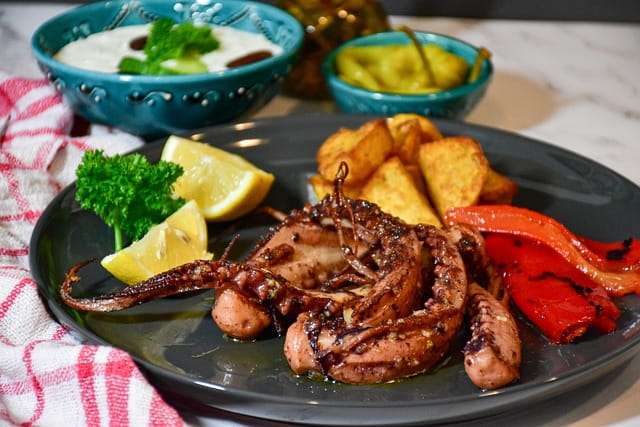
How to store octopus and how to buy them
- Seafood, whether fresh or frozen, should be acquired as quickly as possible after leaving the market to reduce the amount of time it spends at potentially dangerous temperatures. Put in a plastic bag with a zip closure to protect nearby surfaces from any accidental spillage.
- In order to keep the fish cold on the trip back home, you may either put it in ice or a cooler. The fish must be kept at temperatures below 40 degrees Fahrenheit if it is to retain its freshness. If the fish has not been adequately preserved, it should not be left in a hot car for an extended period of time. Take it home and store it in the fridge as soon as possible after purchase.
- Prepared seafood, including octopus, may be safely stored in the fridge for up to four days after cooking. Reducing but not eliminating bacterial growth in food is the primary benefit of refrigeration. Due to the importance of avoiding food spoilage and potential health risks, eating within the recommended time frames is essential.
- Two to three days is the maximum time that cooked octopus will keep in the fridge, but it may be frozen for up to two months. Separate any raw fish from salad fixings or other items that will not be cooked before consumption.
- The question is, how long do leftovers last? The Food Code stipulates that after seven days, any opened or cooked perishable foods must be discarded. Toss away any food that has been sitting in the fridge for more than that amount of time. Some foods should be discarded even sooner than the seven-day mark.
- There is a 9-month shelf life for frozen octopus provided it is kept frozen. It may be kept for a long time in the freezer or an airtight container. They will spoil in a few months if you store them in a regular bag at this temperature. The octopus, if frozen, can keep for nine months and still be edible, although the quality will decline with time. It is natural for their texture to change somewhat when defrosted, becoming more mushy and squishy. An expiry date should also be included if the frozen octopus was bought from a supermarket. Depending on the product, the date may be presented as “Best If Used By,” “Best Before,” or “Best When Used By.” There is no need to consider this date as a benchmark for risk. When it comes to the quality of frozen octopus, the expiry date is your best guide.
- For the best results, let the octopus thaw in the fridge overnight after being frozen. The octopus may be stored by placing it in a large mixing bowl and covering it with a wet paper towel. Put the dish of octopus in the fridge for at least 12 hours, or until it has completely thawed. After defrosting, it should be pliable, making octopus preparation much simpler than if you were to start from scratch. The thawed octopus may be kept in the fridge for up to 2 days. After a while, dangerous bacteria and mould will start to grow because of the low temperatures. It is best to stay away from potentially sickening food that has been infected with germs.
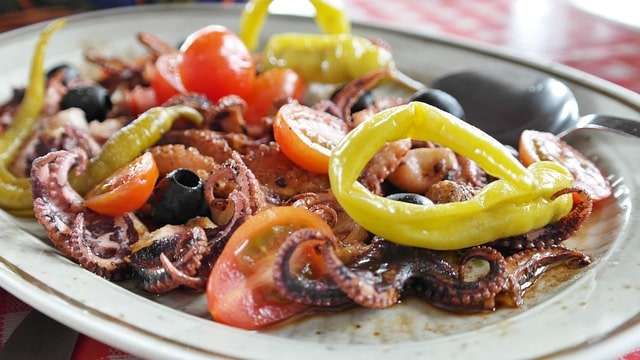
Cooking techniques, secrets, and tips from the kitchen
- Tossing the tentacles of the octopus on a grill imparts fragrant smoke and char to the finished product, making this method of preparing an octopus one of the most well-liked as well as delectable methods to cook octopus.
- Before adding the octopus to the grill, you will first want to make sure that the flesh is properly tenderised by either roasting it or boiling it using one of the ways that are explained further down in this section.
- Place the pre-cooked octopus on a grill set to a high temperature, season it with salt and pepper and cover it with olive oil.
- This will make the process as easy as possible while still producing a flavourful dish.
- After around four to five minutes on a covered grill, turning the octopus over once during the cooking period, it should be properly browned and ready to be seasoned with freshly squeezed lemon juice, fresh herbs, and a little bit of oil.
- Even though it will take more time and effort, roasting an octopus until it is perfectly delicate will ultimately be well worth it so that you may get the texture that you have been imagining. Simply sprinkle some salt on the octopus and set it on a baking sheet that has been wrapped in foil. Then, cover the meat with another piece of foil and crimp the edges to create a totally enclosed environment in which to cook the octopus. Place the octopus on the bottom shelf of an oven preheated to 250 degrees for up to two hours. Every so often, test the meat’s texture by piercing it with a fork to see whether or not it has achieved the amount of softness that you desire. Before serving, let the octopus come down to room temperature uncovered.
- Braising is another another low and slow cooking technique that, like simmering, does not need for the octopus to be precooked beforehand. If you want to prepare octopus, you should absolutely braise it. The first helps to lock in moisture in the flesh, and the subsequent simmering in the cooking liquid helps the octopus to become more soft while also soaking up more flavour. This is an excellent method for cooking octopus that is also quite accessible.
- Try boiling your octopus in a big stockpot for a cooking technique that is both faster and less labour intensive.
- You may aid to infuse flavour into the meat by filling the pot two-thirds of the way with either a vegetable or seafood stock or water that has been infused with the herbs and vegetables of your choosing.
- After the liquid, the veggies, and the herbs have been boiling for around five minutes, add the pre-cut octopus to the saucepan and cover it.
- Cook the octopus in a pot of boiling water for around 15 to 20 minutes for every pound of octopus, checking its consistency with a fork every 10 to 15 minutes until it is completely cooked and ready to be served.
- This technique may also be used as a simple initial step to tenderise your octopus before completing the cooking process in a skillet or on the grill for added flavour and texture.
- The liquid that is left behind may either be poured down the drain or filtered and utilised to make a seafood stock.
- For poaching you should start by bringing one gallon of water and one cup of white wine vinegar to a boil in a large pot, and bring the mixture back to a boil.
- Adding in flavourful additions like lemons, onions, bay leaves, salt and pepper,
- After bringing these ingredients to a simmer and covering the pot for around 10 minutes, proceed to immerse the whole octopus into the liquid
- The octopus should be added to the water, and the pot should be kept at a simmer for about 15–20 minutes for every pound of octopus.
- Check the softness of the flesh with a fork at regular intervals during the cooking process, and take the pot from the heat whenever the octopus is readily penetrated with the fork.
- Your poached octopus may be stored in the refrigerator for up to two days to keep it fresh so that you can use it in other cold dishes such as salads and carpaccio’s, or it can be served heated straight away.
- If you want to give your already-cooked octopus an additional level of taste, give it a quick pan-fry in a hot skillet for a few minutes to get some great caramelization on the exterior. It is recommended that you begin by boiling or poaching the octopus, allowing it to cook gently and then allowing it to cool before searing it in a skillet for the best possible outcome. Either place your full tentacles in a skillet that has been greased and fry them for around 8 minutes on each side, or slice your tentacles ahead of time into thinner pieces and cook them for 2 minutes on each side for a flawless finish.

History of octopus from the beginning until today
- A stone carving from Bronze Age Minoan Crete (1900–1100 BC) at Knossos shows a fisherman clutching an octopus. The Gorgon’s severed head, protruding tongue and teeth, and snake-like tentacles may have inspired the octopus and squid.
- The mythical Kraken lives in Norway and Greenland’s coastal seas. Art depicts huge octopuses assaulting ships. It appeared in Linnaeus’ Systema Naturae’s 1735 first edition.
- Octopus is used in sushi, takoyaki, and akashiyaki. Takoyaki are wheat flour-based balls cooked in a special pan. Japan invented takoyaki. This sushi uses octopus, tempura leftovers (tenkasu), pickled ginger, and green onion.
- Miruhulee boava is Maldivian octopus tentacles cooked with curry leaves, chilis, garlic, cloves, onions, peppers, and coconut oil for many hours.
- Octopus, called as “Ourite” in Mauritius and Rodrigues, is a popular seafood dish, especially in coastal locations where it is abundant. Recently, octopus consumption has dropped significantly. Masala octopus curry and “Daube” (hot tomato sauce) are famous US octopus dishes.
- On the Greek islands, octopuses hang on a rope like laundry on a clothesline. Spearfishing near coast yields them. The fisherman must land his prize and beat it on a stone to tenderise the flesh. They are hung to dry before being grilled and served hot or cold in a salad. The meal is made using Greek spices and ingredients such olive oil, garlic cloves, oregano, pepper, and lemon juice. Most people love octopus meze, particularly with ouzo.
- Spain loves octopus. Galician polbo á feira (market-fair-style octopus) is a delicacy. Pulperas are worldwide eateries that provide this dish.
- Portugal traditionally prepares octopus in a lagareiro (roasted with potatoes, herbs, onion, garlic, and olive oil in the manner of an olive oil miller), stewed with rice (arroz de polvo), breaded and deep fried, and served with rice and beans.
- Mediterranean cuisine, like Tunisian, uses octopus. Octopuses are collected in Djerba and Kerkennah in Tunisia by taking advantage of their natural desire to hide at night. They gather saltwater in grey pottery pots on the seafloor at night. They check them the next morning for octopuses. Tunisian cuisine uses seafood, notably octopus, in couscous, spaghetti, and chorbas.
- Turkish mezes, small appetisers, often include octopus. Octopus salad (ahtapot salatas) and eggplant are popular cold mezes at fish restaurants. Grilled or casseroled, it is also hot.
- Octopus is one of Hawaii’s most popular dishes. Octopus, known as he’e or tako in Hawaii and Japan, is a favourite fish bait.
